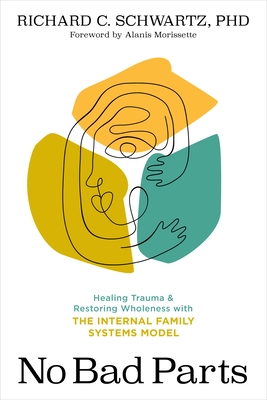
In No Bad Parts: Healing Trauma and Restoring Wholeness with the Internal Family Systems Model, Dr. Richard C. Schwartz invites readers to rethink what it means to be human. Instead of seeing ourselves as a single, unified identity, he argues that we are made up of many “parts” – inner subpersonalities that carry emotions, memories, and protective roles formed through our life experiences. The groundbreaking concept of Internal Family Systems (IFS) is not simply another therapy model; it’s a compassionate philosophy of healing that encourages us to listen to, rather than silence, the many voices within.
At its heart, Schwartz’s message is both radical and deeply humane: there are no bad parts of us. Every behavior, even the most self-destructive, comes from a part that once tried to protect us. Whether it manifests as anxiety, anger, addiction, or perfectionism, each part deserves curiosity and compassion rather than judgment. By learning to communicate with these parts, we begin to unburden them from the pain they carry and reconnect to what Schwartz calls the Self – the calm, wise, and loving center of our being.
What makes this book stand out is its emotional honesty. Schwartz writes with sincerity and warmth, using examples from therapy sessions to show how people heal by making peace with their internal world. While some readers might find his tone spiritual or even mystical, as one reviewer pointed out, the underlying insight remains profoundly practical: real healing begins when we stop treating our thoughts and emotions as enemies to be fixed.
Readers like Thomas praised the book for its compassionate approach to trauma, particularly the way Schwartz reframes coping mechanisms like binge eating or substance use as protective strategies rather than moral failings. The IFS framework encourages us to see these behaviors as parts trying their best to shield us from pain. This shift from shame to empathy is what makes IFS feel so liberating.
Another reader, Emma, offered a deeply personal reflection. She described how traditional therapies often left her feeling torn between self-acceptance and self-improvement, as if loving oneself and wanting to grow were contradictory goals. No Bad Parts helped her see that both can coexist. Healing, Schwartz teaches, comes not from eradicating our flaws but from embracing every aspect of who we are. Emma also found the book’s exploration of social justice and compassion compelling, especially its insistence that even those who cause harm are acting from wounded parts. In her view, this model holds the potential not only to heal individuals but to transform how society approaches rehabilitation and forgiveness.
However, not every reader was fully convinced. Neal found the book overly spiritual and lacking in empirical grounding, likening it at times to a quasi-religious text. He suggested that while the metaphor of internal “parts” has value, the book’s mystical tone might alienate more skeptical readers. This criticism underscores an important point: IFS challenges traditional scientific frameworks by blending psychology with spirituality, and that can be polarizing.
Despite differing opinions, No Bad Parts has earned its place as a transformative guide for anyone interested in self-discovery, trauma recovery, and compassionate living. It bridges therapy, mindfulness, and spirituality in a way that feels refreshingly kind in a world obsessed with self-optimization. Schwartz’s message is clear and hopeful: when we learn to love all our inner parts, we can extend that same compassion outward – to others and to the world itself.
If you’re ready to explore a new way of understanding yourself, No Bad Parts offers a gentle yet powerful roadmap toward inner harmony.


